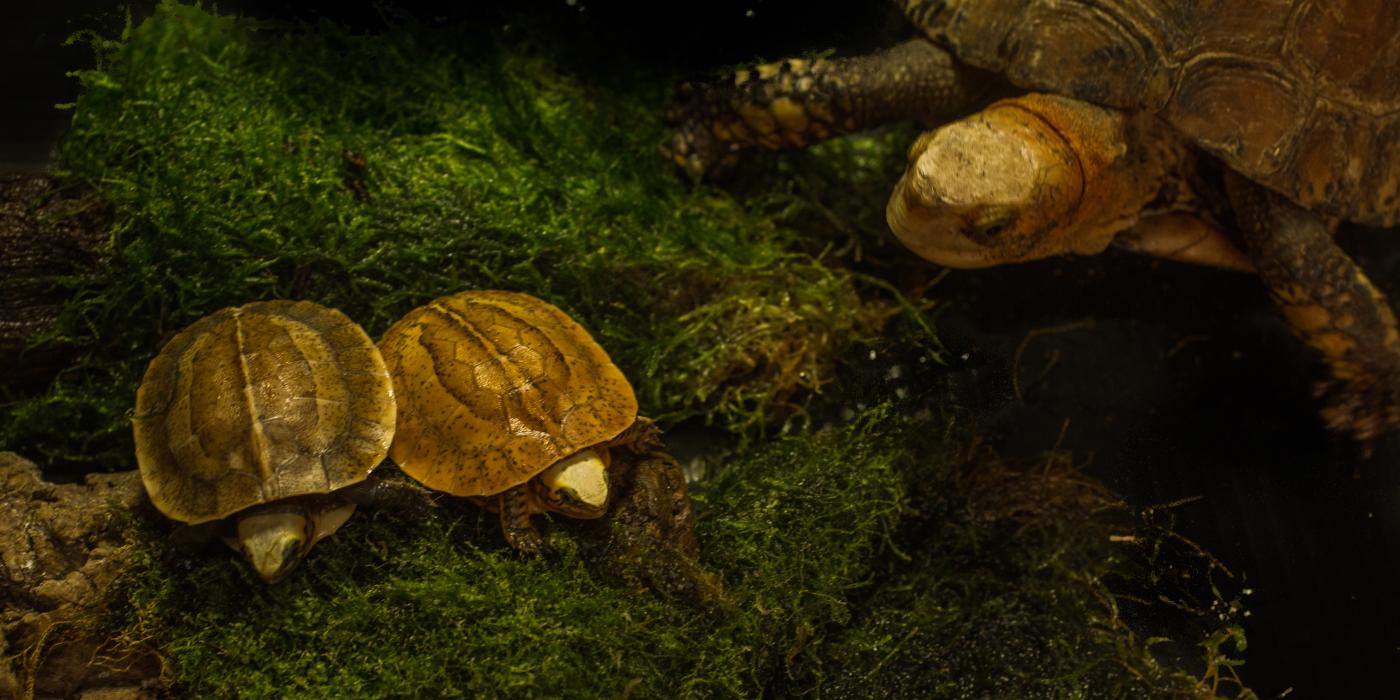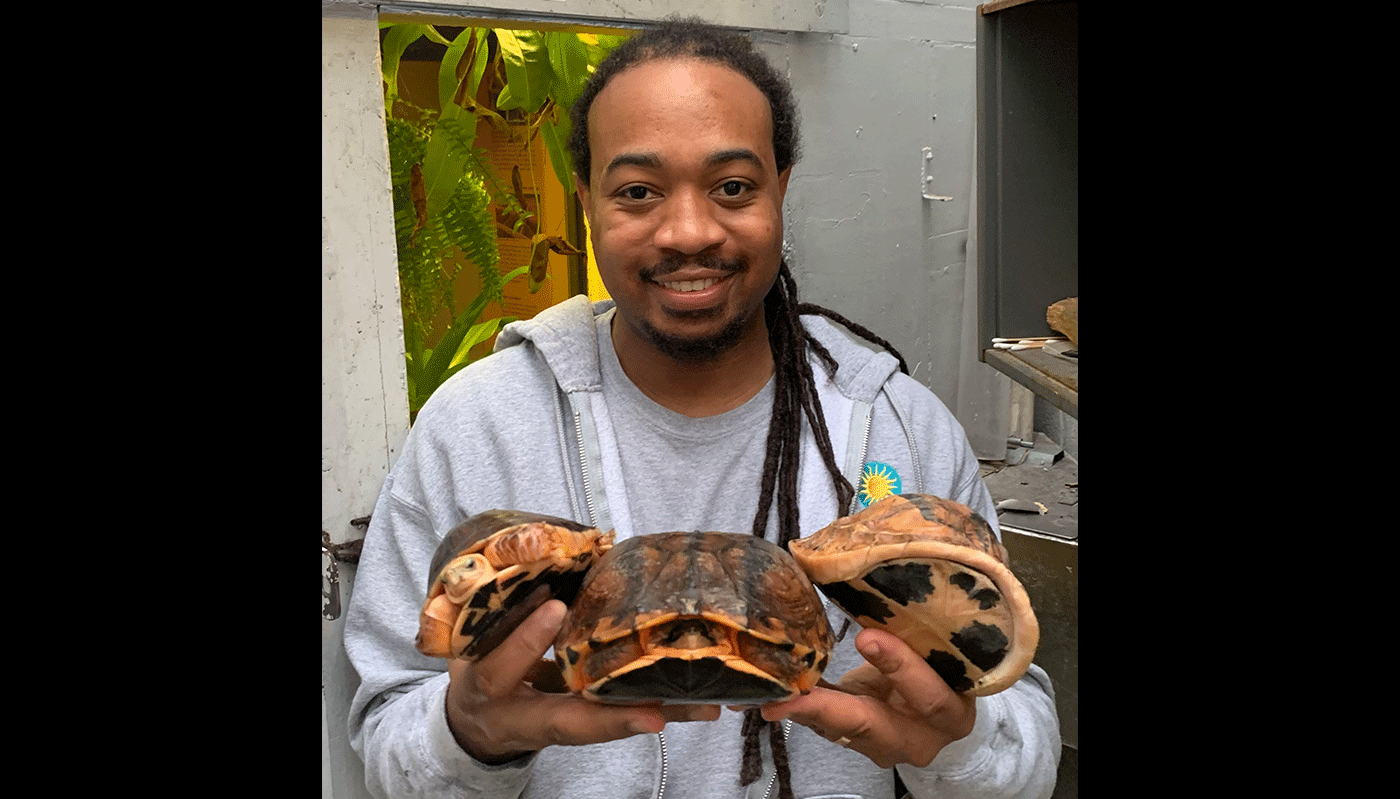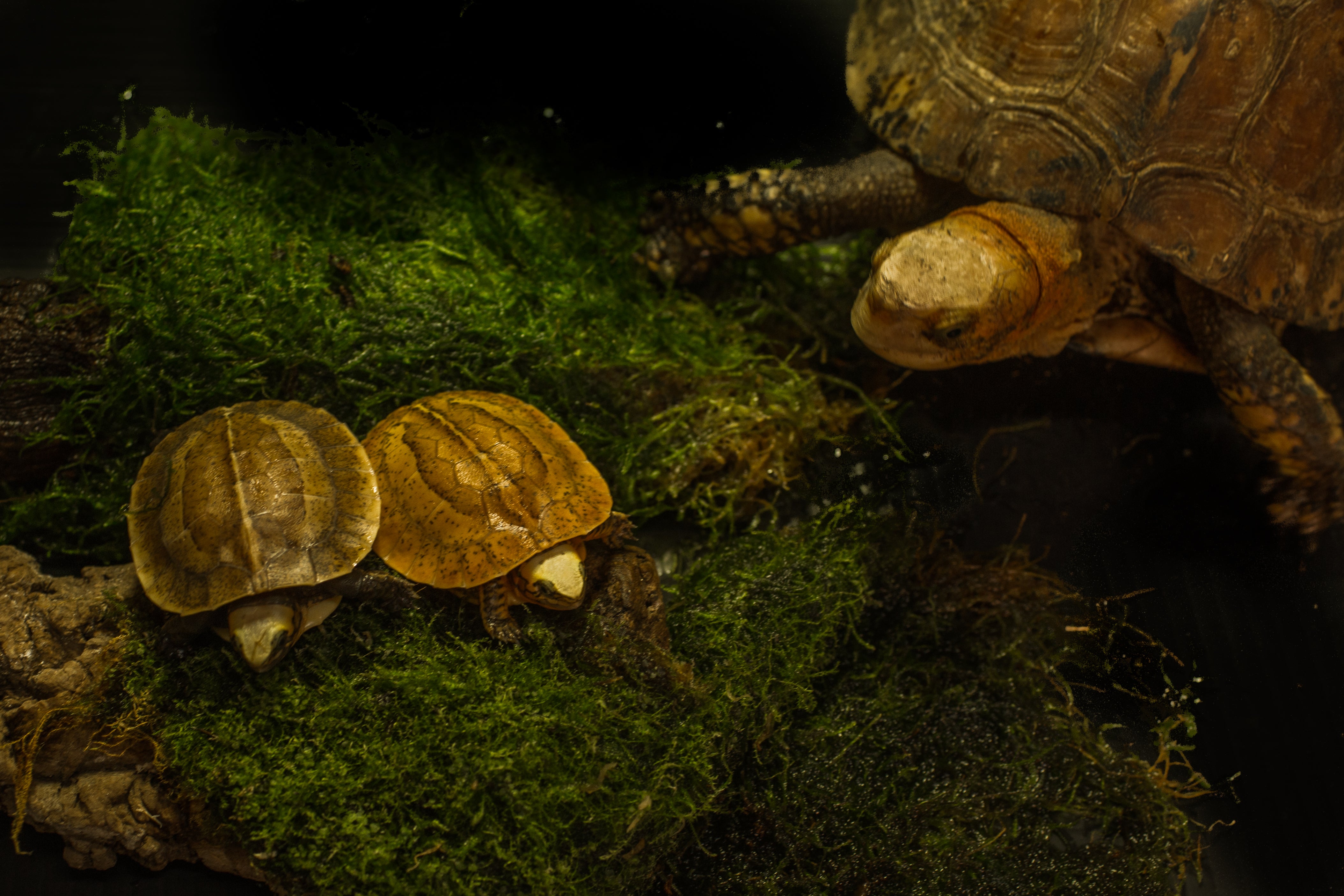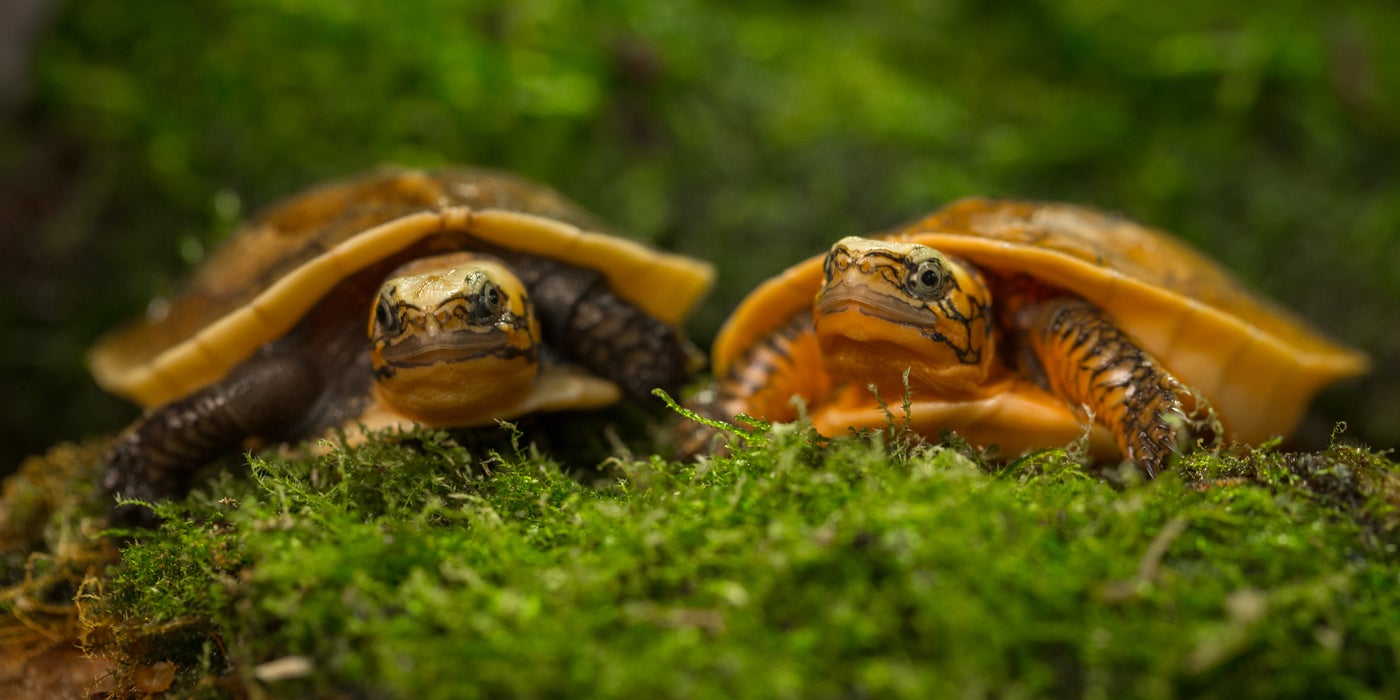How to Care for Bourret’s Box Turtles and Other Asian Box Turtles

Slow down for a minute and meet the Smithsonian’s National Zoo’s turtle-y awesome Asian box turtles! Reptile Discovery Center animal keeper, Kyle Miller, shares his experiences working with these endangered turtles. Read on to find out what it takes to care for Bourret’s box turtles and other Asian box turtle species.

There are twelve living species of Asian box turtles, and all of them are endangered. Asian box turtles belong to the genus Cuora. Here at the Reptile Discovery Center, I help care for three species: the McCord’s box turtle (Cuora McCordi), three-striped box turtle (Cuora trifasciata) and Bourret’s box turtle (Cuora bourreti).
Check out the Zoo’s three Asian box turtles in this up-close encounter:
As seen in the video, these three species can live in the same space. All three come from similar climates and forested environments. Bourret’s box turtles, specifically, are from the forests of Central Vietnam and Laos. They appreciate high humidity, so we mist the exhibit daily. The exhibit also has a large water feature for the turtles to soak in, which they seem to enjoy.
Plants are a key feature for Bourret’s box turtles. They are naturally very shy animals, so the large number of plants both mimic their natural forest habitat and provide places where they can hide. Bourret’s box turtles are omnivores—they eat both plants and animals. While we are not able to import their exact diet from Vietnam, we provide items that are similarly nutritious, including leafy green vegetables, root vegetables and protein in the form of crickets, mealworms, earthworms and roaches. Earthworms are definitely their favorite treats.

Bourret’s box turtles are critically endangered due to habitat loss and collection for the food, pet and medicinal trade. One specific conservation effort zoos are mastering right now is building assurance populations. If something catastrophic were to suddenly happen to the wild populations, those in zoos could provide a backup so the species does not go extinct.
There is still a lot we don’t know about the husbandry and breeding of Asian box turtles. Here at the Smithsonian’s National Zoo, we only recently made a breakthrough with breeding Bourret’s box turtles in 2017. Those hatchlings were the first of their species to hatch both at the Zoo and as a part of the North American Association of Zoos and Aquariums’ (AZA) Species Survival Plan (SSP) for Bourret’s box turtles!
These turtles are very complicated to breed. It requires mimicking a winter cooling period, known as brumation, for the adults where temperatures drop down to 40 degrees Fahrenheit. Then, we have to slowly bring it back up to spring temperatures, around 70 degrees Fahrenheit. We were not able to achieve these low temperatures inside, so we kept them in a sectioned off area in the outdoor Chinese Alligator Exhibit. The Chinese alligators need a cooling period in the winter as well, so the space was perfect! We worked as a team to keep an eye on the thermostat daily and make small adjustments whenever necessary.
Incubation also requires a lot of patience. Bourret’s box turtle eggs can take up to four months to hatch. Although the parents had produced and laid eggs in previous years, they either were not fertile or did not develop fully inside the egg. It was really exciting in 2017 when the first of our hatchlings pipped (broke through the shell for the first time)!

Unless you have a specific interest in turtles, you have likely never heard of these endangered turtle species before. The key to saving Asian box turtles is raising awareness about what makes them such cool creatures and the threats they face in the wild. While zoos educate the public about these species and contribute to their conservation, it’s up to all of us to share these turtles’ stories.
For anyone hoping to work with turtles like I do, the first step is learning everything you can about them! Collect and read as many turtle books and articles as you can. Start with the animals that interest you most, but also explore the species you don’t know as much about. When you’re old enough, volunteer at a local zoo or nature center where you can get hands-on experience caring for turtles. Many local nature centers have Eastern box turtles or can provide guidance on where to spot them in the field.
Often, turtles are especially active after it rains. If you see a wild turtle, take a moment to study or watch it from a distance. However, please resist the urge to handle or “rescue” it. The best thing you can do when you come across wildlife is leave it in the wild.
Get an up-close look at the Asian box turtles in the Reptile Discovery Center when you plan your visit today!
Slow down with more stories from our keepers! Check out a variety of stories from all over Smithsonian’s National Zoo and Conservation Biology Institute here.
Related Species:
